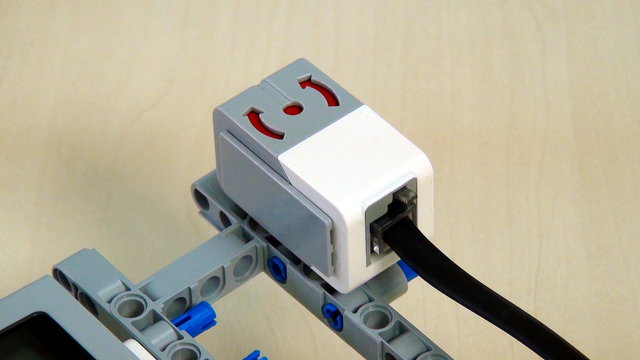

EV3 basics course. Touch sensor. Tasks (part4)
Tasks for STEM classroom and home exercise to get you used to using the LEGO Mindstorms Touch sensor. Solve them, build a program, record a video and upload your solutions below.
- #141
- 10 Oct 2015


Tasks for STEM classroom and home exercise to get you used to using the LEGO Mindstorms Touch sensor. Solve them, build a program, record a video and upload your solutions below.


The robot attachment build in this tutorial gives an idea on how to release a rubber band at a specific moment using a motor. It's a simple, but yet powerful technique on using rubber bands.

In Episode 58 we introduced you to a LEGO Mindstorms EV3 Modular robot. In this tutorial, we show you how we reached that construction. We start from a construction found on the Internet and take you through the process of examining and improving it, till we reach a more stable and reliable robot.


This time we stop on "Using the Right Senses" mission, or actually on how to solve the "Right Senses" mission without "Senses" (sensors). To achieve that we use the carabineer counstructed in one of the previous tutorials, of course after a small modification.

Overview of what is going to happen that part of the lessons.

This video tutorial reviews the EV3 Gyro Sensor and the HiTechnic Gyro Sensor for the LEGO Mindstorms NXT robotics Kit. We compare the two sensors and demonstrate them in action.


The attachment builds on previous episodes this time using two LEGO rubber bands. When a lever is released the rubber band exerts pressure on it and moves it in a circular motion. As an example we are solving the 2012 FIRST LEGO League, Senior Solutions, stove mission (which was quite interesting as a mission)


Many teams are having troubles with the EV3 Gyro Sensor and its drift. In this video we are showing one way to fix this behaviour and get an accurate measurement from the sensor.

What is the end result? - have the attached on the mission model. What is the mechanism the would make the robot hang on the mission model.

The important task before the solution. If you haven't done it already, then attach a new axle at the front of the robot and extend the construction with gear wheels and axles to reach the two legs at the two sides of the robot.

Building instructions for a LEGO Mindstorms EV3 Ambulance Robot Attachment for the FIRST LEGO League 2013 Nature's Fury robotics competition. The attachment grabs the ambulance car and slightly lifts it. The rubber bands help with triggering the attachment at the right time

Building instructions for the Pinless Rubber Band Attachment:

Building instructions for a robot for the World Robotics Olympiad Sputnik competition. This is the light version without the lift at the top.

When you need a LEGO robot attachment to lift heavy things on the competition field. Probably at FIRST LEGO League or World Robotics Olympiad. This attachment uses 4-5 gear wheels to lift a heavy object.
Build with LEGO Mindstorms EV3 parts.

Maze Runners are one of the very popular robotics competitions. But there are a lot of limits that the robots must comply with. Like the size of the robot.
This here are building instructions for a very small maze runner robot, build with LEGO Mindstorms EV3. It uses two tires that are technic and not Mindstorms simply because none of the Mindstorms tires fit the size limit.
The robot has an Ultrasonic sensor and a Gyro sensor at the top.


Here is Mintonet. The robot is created to be used in pairs, but you can also build just one and practice your shooting with a box. The robot works with plastic balls between 5 and 7 cm. Using the ultrasonic sensor it can detect either its partner or a box and then it shoots. How many balls can you score?